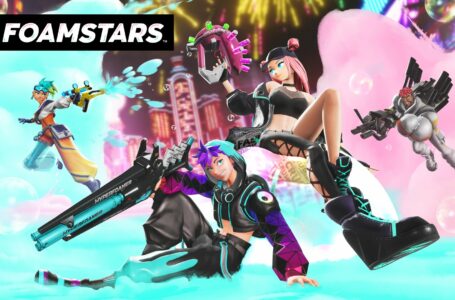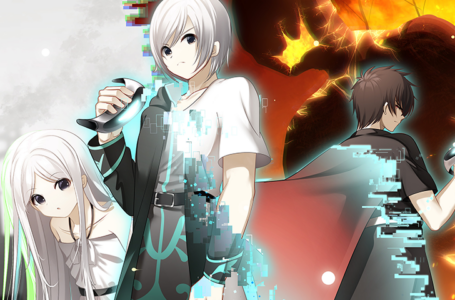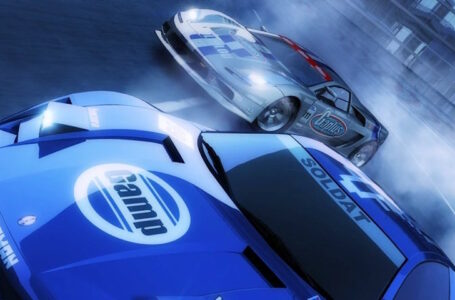2243-2245: The cooperative conflicts of Galaxian³
Eleven years after the events of Burning Force, the arrival of the 23rd century saw the invention of the first space-time jump drive, known as Warp Drive. Using this technology, humanity was able to explore the stars — and the result was known as the Second Space Pioneer Era. Around this time, the terms “Earthian” and “Galaxian” were coined in order to distinguish those who originated from Earth, and those who had their origins in the stars.
In the same year, the United Government of Earth was dissolved and replaced with a new organisation known as the United Galaxy, whose identical initials conveniently meant that none of the existing military organisations needed to go through the rigmarole of repainting the liveries on all of their craft. As you might expect, the UGSF continued to play a leading role in humanity’s exploratory efforts and the defence of Earth — which is what led to the two Galaxian³ incidents of 2243 and 2245.
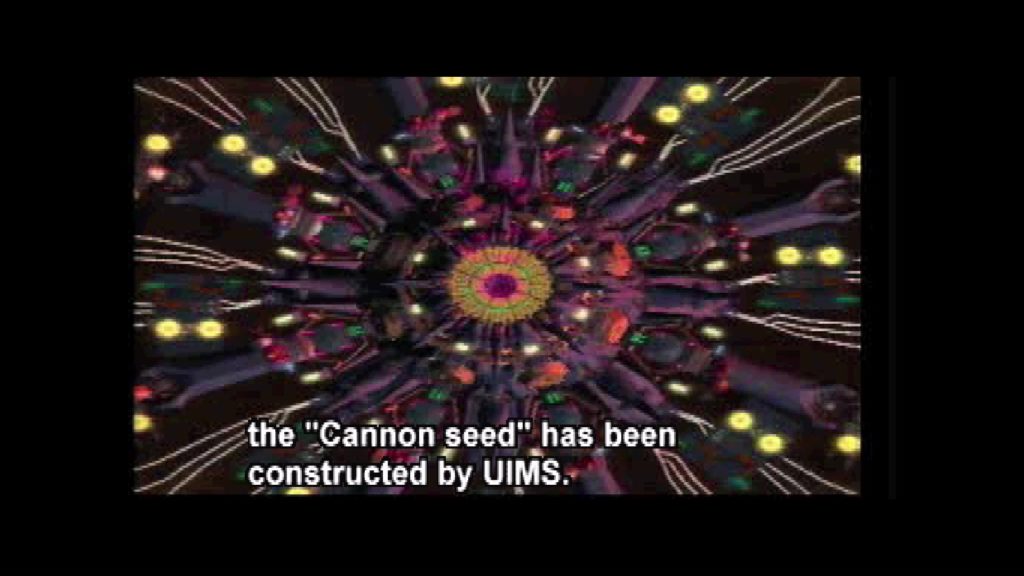
The first of these, known as Project Dragoon, arose during Earth’s first contact with an extraterrestrial being in the Epsilon Eridani system. Said being was referred to at various points as a “Live-Weapon” or the Unknown Intellectual Mechanised Species — UIMS (pronounced “weems”) for short.
Back in our own timeline, the Project Dragoon incident was chronicled in the first incarnation of Galaxian³, which first appeared at the International Garden and Greenery Exposition in Osaka, Japan, in 1990, more commonly known as Expo ’90. Unlike many of Namco’s previous games, Galaxian³ was a full-on theme park attraction, featuring a large screen powered by laser disc technology, moving fixtures and the ability for up to 28 people to play together.
Galaxian³ was a natural extension of how Namco, like many other arcade game manufacturers of the ’80s and ’90s, had been exploring the idea of “taikan” games — which loosely translates to “bodily sensation” or “experience”. The term was originally coined by Sega to describe its immersive sit-down experiences such as Hang-On, OutRun and After Burner, but Namco became particularly interested in the idea with games that particularly lent themselves to the taikan experience, such as racing games Final Lap and Winning Run, and helicopter shooter Metal Hawk.
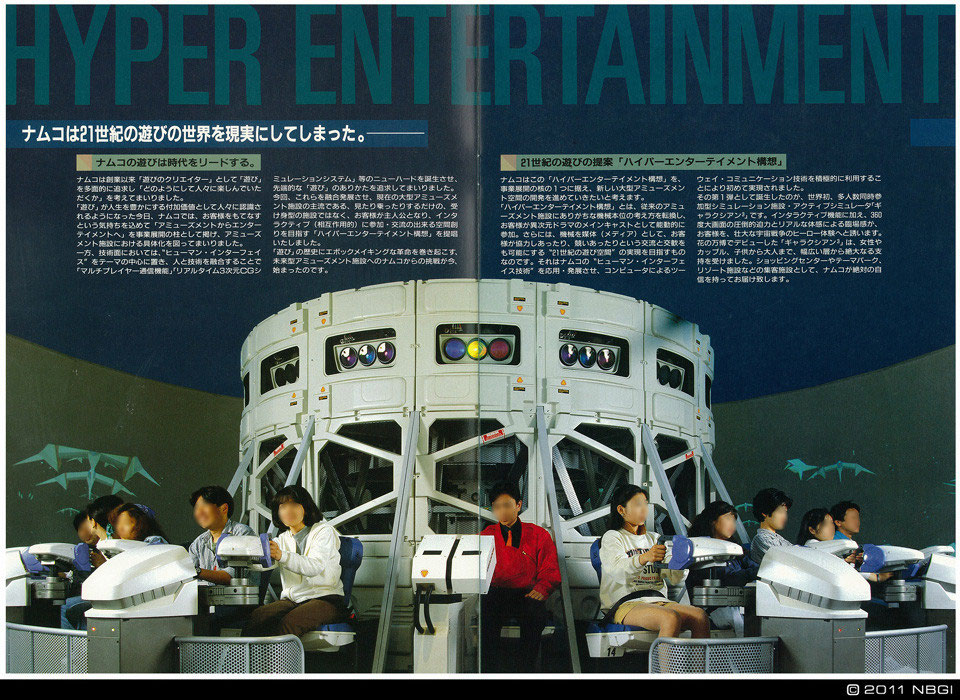
With taikan games proving particularly popular in the late ’80s — with some home computer and console publications of the time specifically criticising arcade games for starting to feel more like theme park attractions than well-designed games — it was natural for Namco to want to take the next step and design a full-on amusement park. Galaxian³ was the first attraction to be designed for the proposed park, and the overall design of the game was placed in the hands of Xevious and Point Blank designer Shigeki Toyama.
Such was the perceived importance of the Galaxian³ project that Namco put almost everything else on hold to finish it, which means 1990 was a bit of a dry spell for the company otherwise. They had faith that Galaxian³ would be an experience like no other, though; a project of such grand ambition that no-one — particularly their great rival Sega — would ever be able to copy it.
The final Galaxian³ design was situated in a circular room, with a screen wrapped all around the outside, and up to 28 players sitting in the middle with their own controls. Part of this was a deliberate attempt to increase the game’s appeal as something truly distinctive in the market at the time — and part of it was to make it more difficult for Sega and other rivals to copy it.
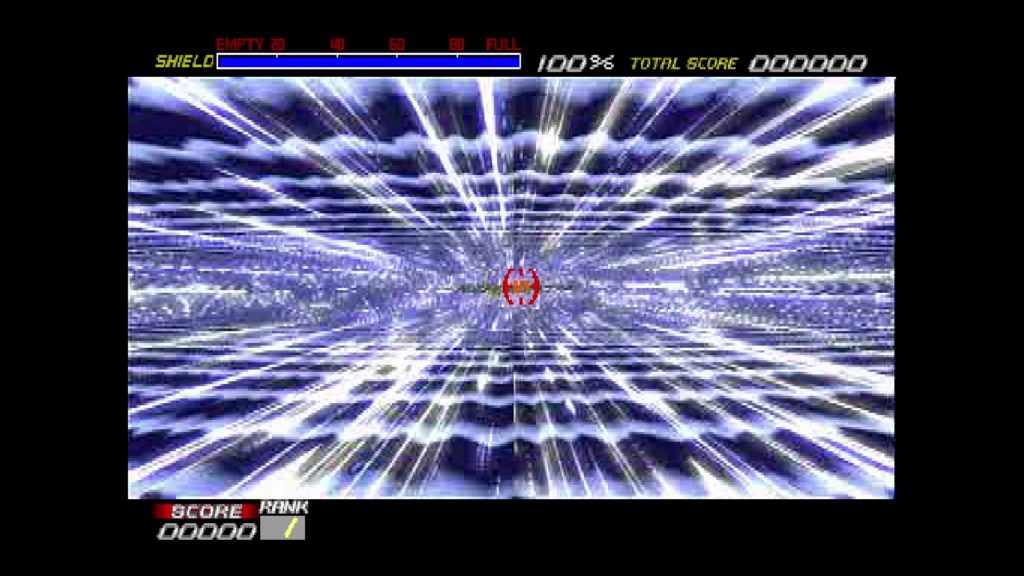
The project wasn’t without its issues, as you might expect. The “Motion Unit” that formed the centrepiece of the original 28-player version was fraught with problems due to its hydraulics being designed by an inexperienced engineer; these included wires that were too short and a tendency for the internal hardware to be knocked and jostled around by the moving seats. But ultimately the project was successful, and the game’s initial showing at Expo ’90 proved popular with attendees.
That original Galaxian³ setup was subsequently moved to Namco’s Wonder Eggs theme park in Setagaya, Tokyo, where it remained in operation until 2000; sadly, at that point, the machine was dismantled, and most of its parts were either sold off or destroyed. A second 28-player Galaxian³ machine was constructed for a Namco arcade centre in Kanagawa Prefecture, and remained active between 1993 and 1997; once again, though, when the arcade closed, the machine was dismantled, with its parts this time auctioned off for charity.
As you might expect, a huge 28-player setup wasn’t ideal for most arcades out there, so shortly after revealing the original version of Galaxian³, Namco set about producing smaller versions. The rarest of these was a 16-player variant known as the GM-16 unit; a little more commonly seen was the “Theater-6” version, which replaced the wrap-around screen of the original with two side-by-side screens each powered by their own laser disc player.
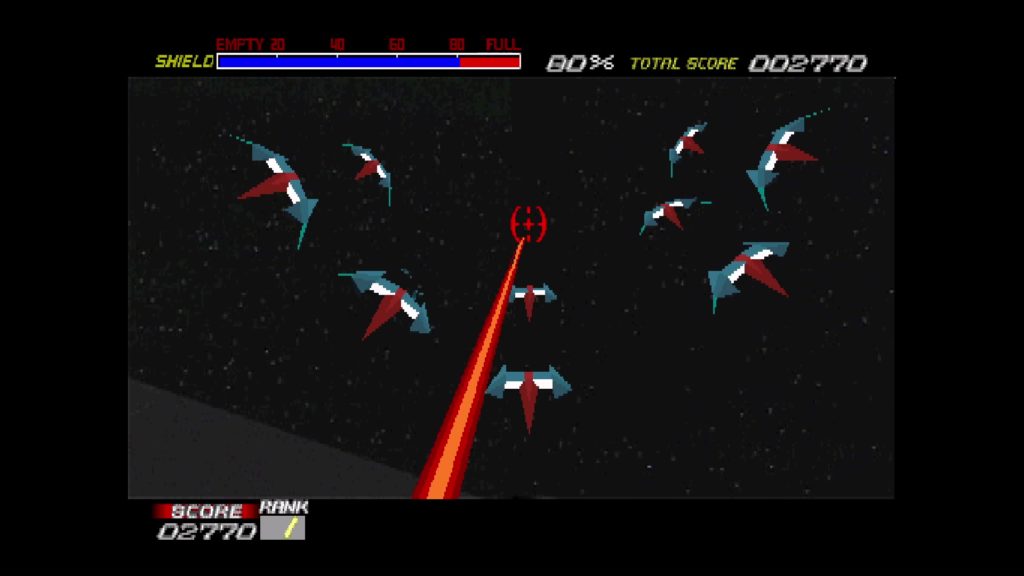
Very few of any of these machines still exist in the wild; given their large and bulky nature, even in their smaller incarnations, arcade operators tended to simply dismantle or destroy the machines when they were no longer profitable, with no particular mind for preservation. A few Theater-6 variants are still out there in the hands of private collectors — and the only known remaining publicly available Galaxian³ machine is in the Video Game Museum in Japan.
It’s fortunate, then, that Namco were sensible enough to bring Galaxian³ home on the PlayStation platform. While obviously some of the impact of the arcade original would be lost playing on a small-screen TV in one’s living room, the PlayStation was a good fit for the game; the CD-ROM technology on which it ran made it ideal for storing and playing back the pre-rendered background scenes, while its decent 3D capabilities made it more than up to the task of overlaying the polygonal enemies atop the background movie. With a suitable accessory, the platform could even support up to four players; not quite the 28 of the original, but reasonably close to the Theater-6 version, at least.
Not only that, but Galaxian³ for PlayStation also included a follow-up scenario known as The Rising of Gourb, which unfolded two years after the events of the original Galaxian³ and chronicled the UGSF’s attempts to fight back against a new gravity-controlling variant of the UIMS.
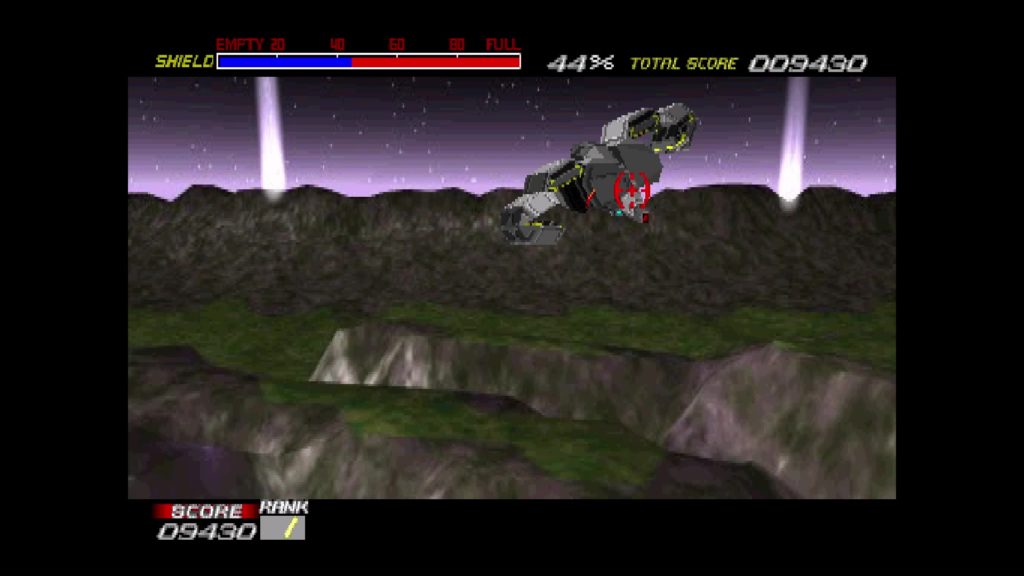
The Rising of Gourb took advantage of the PlayStation’s power by featuring texture-mapped enemies rather than the flat-shaded polygons of the original — and since it used all-new original footage for the backgrounds, there wasn’t the visible “seam” between the two laser disc movies from the original Project Dragoon version. Aside from that, it’s a rather similar experience, but a good addition to the PlayStation package.
So exactly how does Galaxian³ play? Well, the reason that we’ve spent so long talking about the history and context of it is that in terms of gameplay, there’s not actually a lot to it. It’s a very straightforward rail shooter, in which each player controls a targeting crosshair and shoots at polygonal enemies and structures that are overlaid on the prerendered backdrop.
It’s not completely mindless, though; as you might expect, the game is built with cooperative play in mind, and indeed it’s extremely difficult to clear when playing solo due to overall rapid pace of the experience and the need to shoot down incoming enemy projectiles in order to conserve your shield energy. The more players you have, the more safe you can keep your team — though an element of competition is also present through the fact that each player’s score and overall contribution is tracked separately.
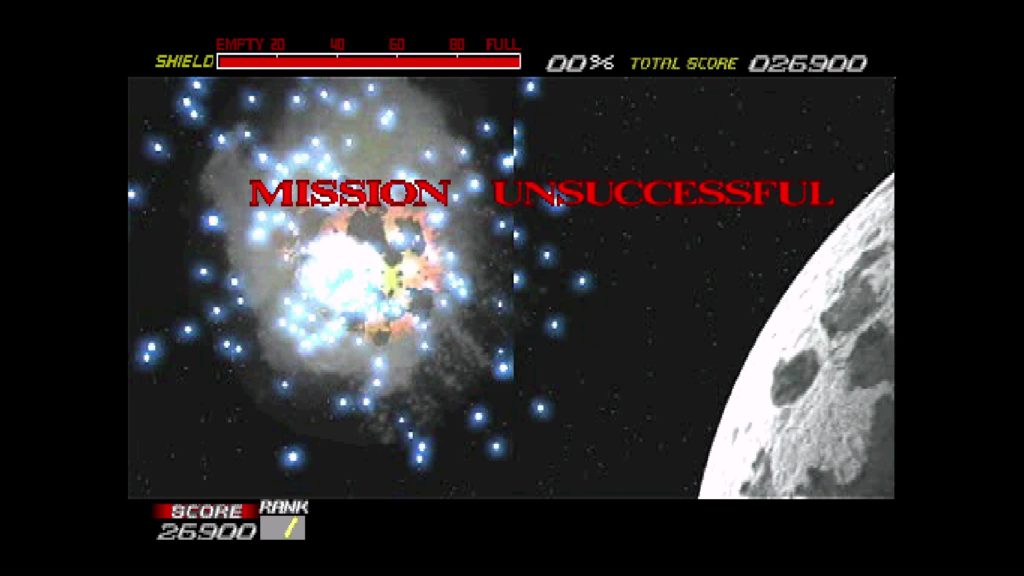
In fact, despite its mechanical simplicity, Galaxian³ is still regarded as a rather influential game — not just for how it demonstrated the ways in which video games could be adapted into fully immersive theme park-style experiences, but also how it helped to refine the rail shooter formula. Galaxian³ subsequently begat Starblade — more on that later in this feature — and, in turn, other companies expanded further on the ideas of these games with titles such as Star Fox and Panzer Dragoon; games whose influence can still be keenly felt today.
Galaxian³, despite its scarcity, remains a cult hit among arcade and Namco enthusiasts. It was a truly one-of-a-kind attraction, and it’s a shame that original fully immersive experience is completely inaccessible today. That said, there are people out there restoring Theater 6 machines that occasionally show up at museums and expos — so if you ever get a chance to participate in Project Dragoon, be sure to jump at the chance. You never know when that opportunity might come up again!
Screenshots from the PlayStation version.
Join The Discussion
Rice Digital Discord
Rice Digital Twitter
Rice Digital Facebook
Or write us a letter for the Rice Digital Friday Letters Page by clicking here!
Disclosure: Some links in this article may be affiliate links, which means we may earn a small commission if you make a purchase after clicking on them. This is at no additional cost to you and helps support Rice Digital!
- Letter from the Editor: passing the torch - June 30, 2023
- Super Woden GP 2 is looking promising - June 30, 2023
- Inti Creates is making a 32 bit-style Love Live action platformer - June 26, 2023





